Butted Ends and Mitred Ends — What’s The Difference? And which one should you pick?
A shadow line applied to a butted Maximum Porcelain Island top by SteedForm.
To the everyday person, a butted slab end or a mitred slab end probably don’t look that different. So what sets them apart?
A mitred island bench made of Essastone by Laminex in SteedForm’s showroom.
What is the difference between a mitred end and a butted end?
A mitred end is achieved by having both slabs cut on a 45 degree angle and joined together at a ‘point.’ This creates an almost seamless join at the corner of the bench top.
A butted end is achieved by fitting the slab under the overhang of the bench top above. This application is popular for new generation materials, contemporary design, and when a shadow line feature is desired.
Butted slab ends and new-generation materials (Dekton, Neolith & MAXIMUM).
New generation products such as MAXIMUM (porcelain), Dekton and Neolith (sinterized stone), have particular material make ups that make them better suited to butted end applications.
New-generation materials, such as Dekton, Neolith and MAXIMUM, are extremely hard products. Now, this is primarily a plus — making them tough and resistant to scratches and heat damage.
Where it becomes an issue, is that due to the products hardness - new-gen materials don’t have the ability to move with cabinetry and flooring. This makes mitred slab ends a poor choice. This join increases the likelihood of cracks or chips and popped joins in line with flooring and cabinetry naturally moving. A butted slab end, on the other hand, allows the material to move without damage to the top.
2. If modern bench top design tells us anything — it’s that minimalism and simplicity is in. Small edge profiles give a modern appeal — widely preferred in European design (and we all know us Aussies love to follow our Euro counterparts).
When it comes to achieving a small profile, it’s far easier to polish a tight arris on new-gen materials when a butted slab end is applied. If a mitred slab end is attempted, too much of the surface print will have to be removed in the polishing process — making the bench top and slab end look disjointed and possibly untidy.
This doesn’t have to be a bad thing…
A great plus about butted slab ends is the ability to achieve a shadow line.
A shadow line is a design feature that exposes a small strip of material underneath the bench top, above the cabinetry.
A shadow line could use a similar material to the bench top, or something completely different. For example, you could have a matte black top with a matte black strip to match, or a wood-look/metal strip in the shadow line for a statement.
A shadow line with a Dekton top manufactured and installed by SteedForm.
The Cosentino Adelaide Centre Showroom with a Dekton & Silestone island bench manufactured and installed with a shadow line by SteedForm.
Aesthetic preference
When it comes to engineered or natural stone — the selection of either a mitred or butted slab end is purely aesthetic. Having said that, butted slab ends are rising in popularity for all materials—
European design suggests that butted ends are the most popular choice
Stop your kitchen from aging quickly and consider modern design trends in the way of butted slab ends
A mitred slab end fabricated by SteedForm for BuildTec in Silestone Eternal Calacatta Gold in 12mm








